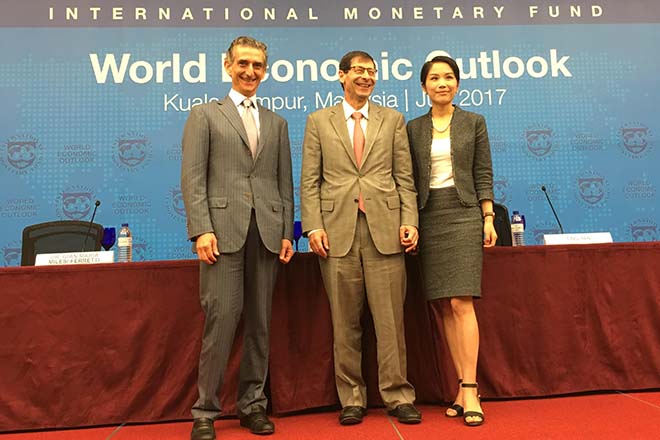July 24, 2017 (LBO) - The pickup in global growth anticipated in the April World Economic Outlook remains on track, with global output projected to grow by 3.
buy diflucan online buy diflucan online no prescription
5 percent in 2017 and 3.6 percent in 2018, the International Monetary Fund (IMF) said.
The unchanged global growth projections mask somewhat different contributions at the country level, U.S. growth projections are lower than in April, primarily reflecting the assumption that fiscal policy will be less expansionary going forward than previously anticipated, a statement issued by the Fund said.
"The cyclical recovery continues. Growth out turns in the first quarter of 2017 were higher than the April WEO forecasts in large emerging and developing economies such as Brazil, China, and Mexico, and in several advanced economies including Canada, France, Germany, Italy, and Spain,"
"High-frequency indicators for the second quarter provide signs of continued strengthening of global activity."
Specifically, growth in global trade and industrial production remained well above 2015–16 rates despite retreating from the very strong pace registered in late 2016 and early 2017, it said.
"Purchasing managers’ indices (PMIs) signal sustained strength ahead in manufacturing and services."
Growth has been revised up for Japan and especially the euro area, where positive surprises to activity in late
2016 and early 2017 point to solid momentum.
China’s growth projections have also been revised up, reflecting a strong first quarter of 2017 and expectations of continued fiscal support.
According to the statement emerging and developing economies are projected to see a sustained pickup in activity, with growth rising from 4.3 percent in 2016 to 4.6 percent in 2017 and 4.8 percent in 2018.
The IMF says, these forecasts reflect upward revisions, relative to April, of 0.2 percentage point for 2016, and 0.1 percentage point for 2017.
"As in the most recent WEO forecast vintages, growth is primarily driven by commodity importers, but its pickup reflects to an important extent gradually improving conditions in large commodity exporters that experienced recessions in 2015–16, in many cases caused or exacerbated by declining commodity prices."
Inflation in advanced economies remains subdued and generally below targets; it has also been
declining in several emerging economies, such as Brazil, India, and Russia.
While risks around the global growth forecast appear broadly balanced in the near term, they remain skewed to the downside over the medium term. On the upside, the cyclical rebound could be stronger and more sustained in Europe, where political risk has diminished.
On the downside, rich market valuations and very low volatility in an environment of high policy uncertainty raise
the likelihood of a market correction, which could dampen growth and confidence.
The more supportive policy tilt in China, especially strong credit growth, comes with rising downside risks
to medium-term growth.
Monetary policy normalization in some advanced economies, notably the United States, could trigger a faster-than-anticipated tightening in global financial conditions.
And other risks discussed in the April 2017 WEO, including a turn toward inward looking
policies and geopolitical risks, remain salient.
Projected global growth rates for 2017–18, though higher than the 3.2 percent estimated for 2016, are below pre-crisis averages, especially for most advanced economies and for commodity-exporting emerging and developing economies.
Among the former, many face excess capacity as well as headwinds to potential growth from aging populations, weak investment, and slowly advancing productivity. In view of weak core inflation and muted wage pressures, policy
settings should remain consistent with lifting inflation expectations in line with targets, closing
output gaps, and—where appropriate—external rebalancing.
Reforms to boost potential output are of the essence, and slow aggregate output growth makes it even more important that gains are shared widely across the income distribution. Financial stability risks need close monitoring
in many emerging economies.
Commodity exporters should continue adjusting to lower revenues, while diversifying their sources of growth over time, the statement added.
World Economic Outlook on track, emerging economies to see sustained pickup: IMF

